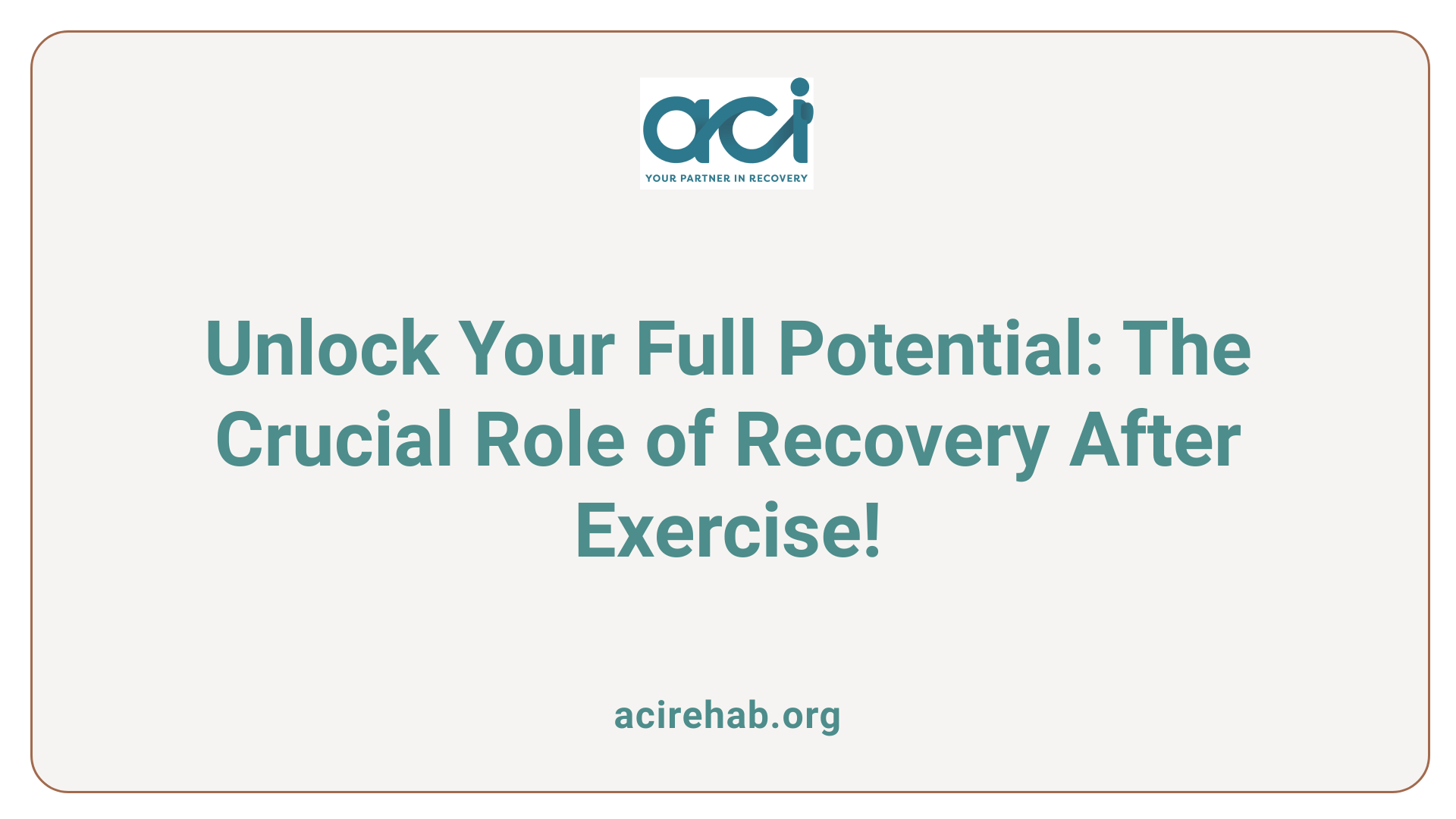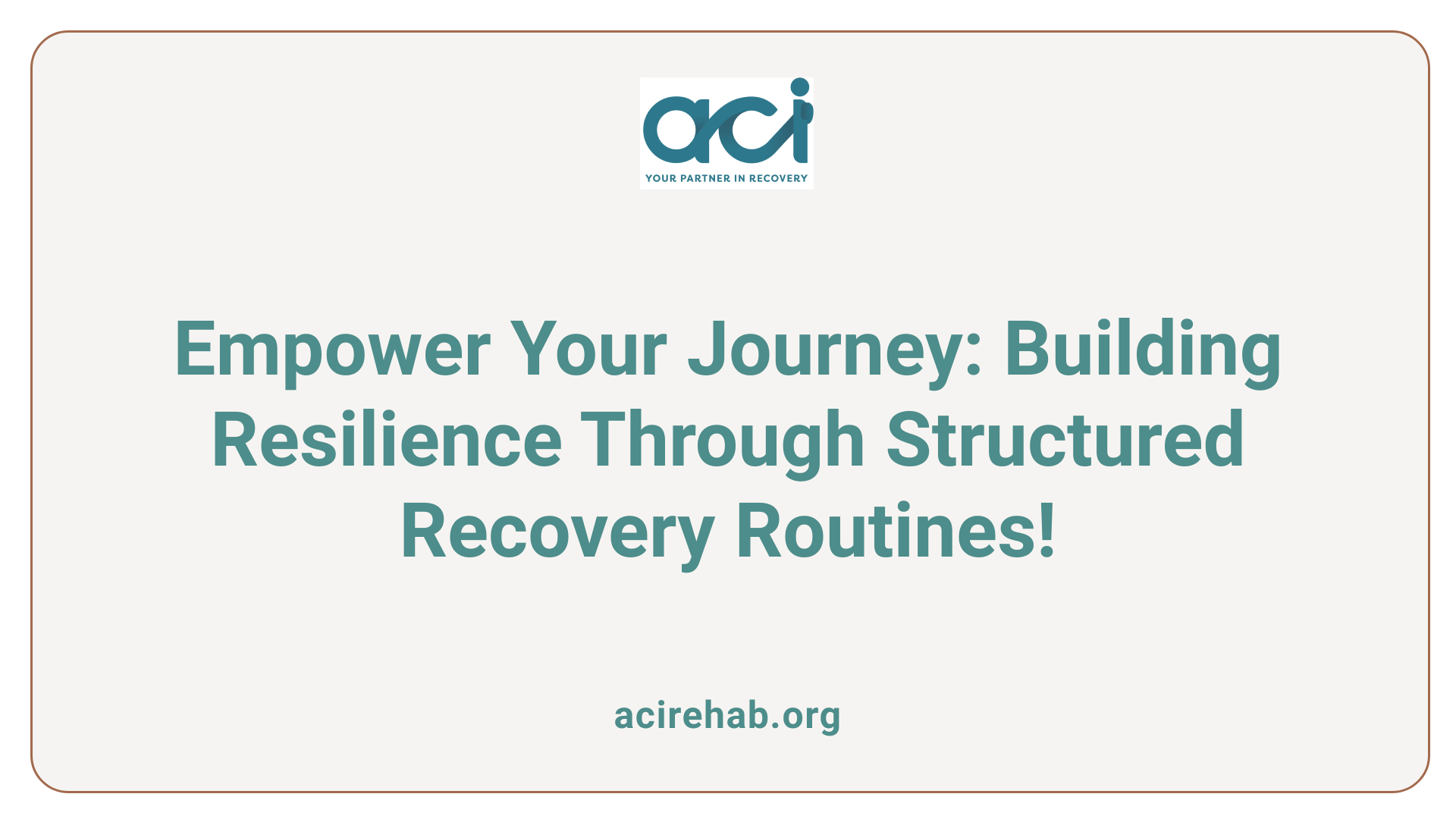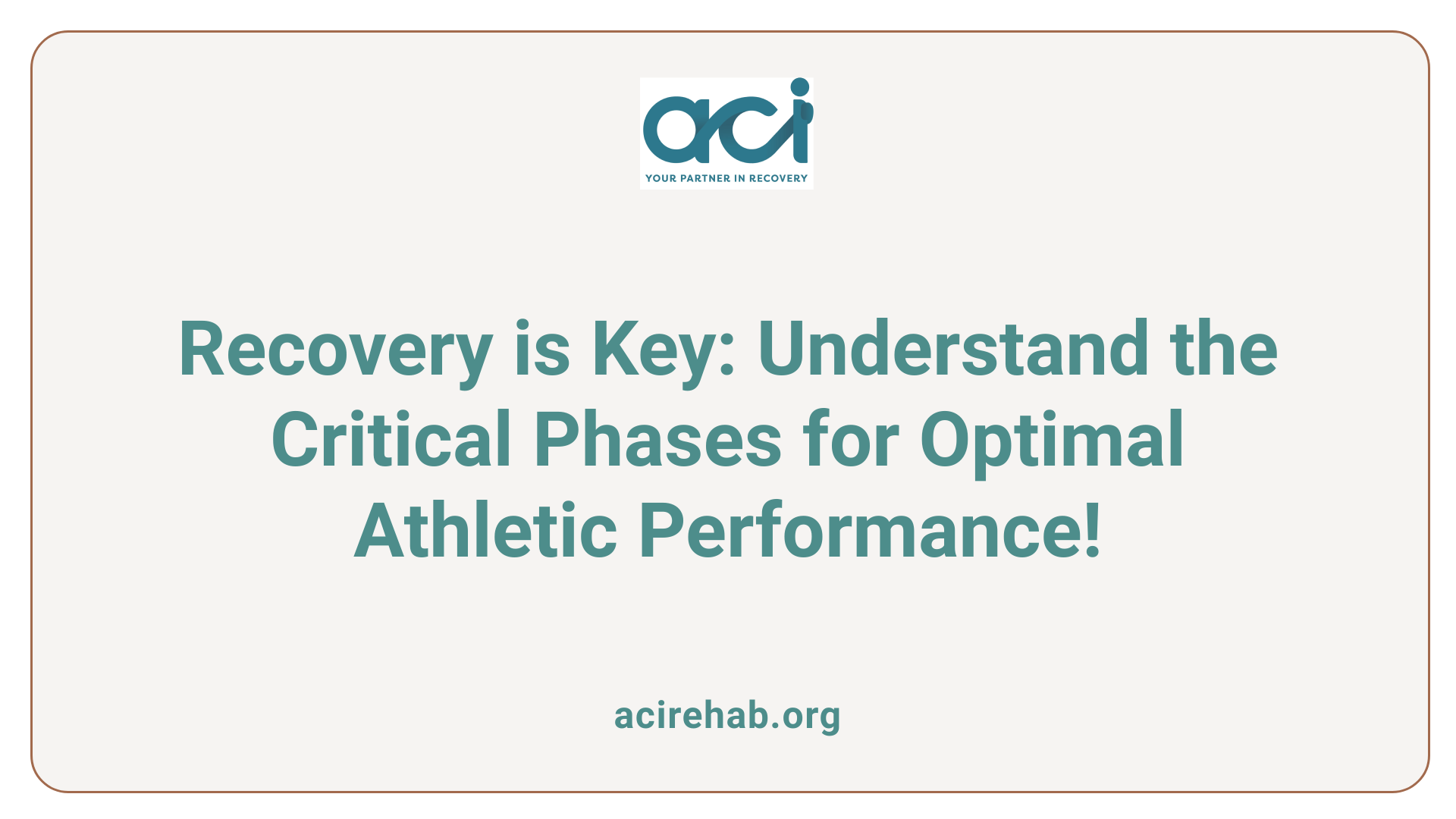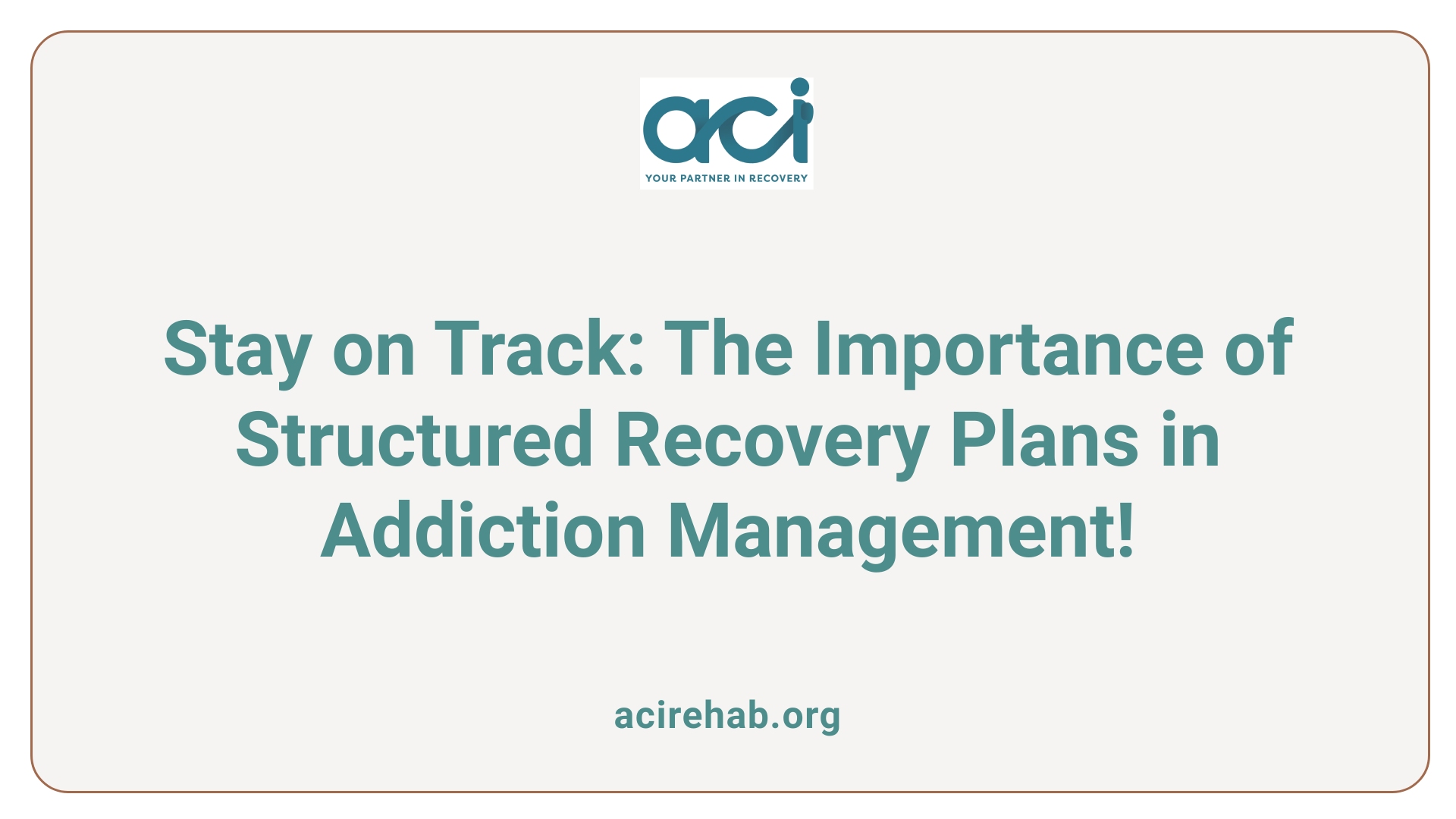Introduction
Recovery routines are the secret ingredient to achieving optimal performance and maintaining overall well-being. Whether recovering from addiction or optimizing athletic performance, structured recovery routines provide the foundation for transforming goals into reality. In this article, we dive deep into the principles of effective recovery strategies and their impacts on physical and mental health.
The Importance of Recovery After Exercise

Why is recovery important after exercise?
Recovery serves as a crucial process following exercise because it facilitates muscle repair, replenishes glycogen stores, and significantly lowers the risk of overuse injuries, which can impede athletic performance.
Muscle recovery is vital as it allows the body to heal from the micro-tears that occur in muscle fibers during workouts. This healing process, led by fibroblasts, is essential for muscle growth and strength. Without adequate recovery time, these tears do not have the opportunity to properly heal, leading to potential overuse injuries. Moreover, an absence of recovery can contribute to memory fatigue and mental burnout, making it harder to stay motivated.
Glycogen replenishment
Another key aspect of recovery involves replenishing glycogen, a critical energy source for muscles, which gets depleted during high-intensity workouts. After exercise, muscles can become fatigued and less effective, making it essential to replenish these stores. Adequate recovery, including a balanced intake of carbohydrates and proteins, is necessary to ensure that muscle glycogen levels return to normal. This replenishment process is crucial for preparing the body for future workouts, reducing muscle soreness, and optimizing performance in subsequent training sessions.
Risk of overuse injuries
Failing to prioritize recovery increases the risk of overuse injuries, which can have long-term consequences for an athlete. These injuries typically arise from repetitive stress on muscles without adequate rest, leading to issues like tendinitis or stress fractures. Conversely, sufficient recovery provides the necessary time for muscles, tendons, and ligaments to heal and rebuild, thus minimizing the likelihood of such injuries.
Mental fatigue
Finally, mental recovery cannot be overlooked. After rigorous workouts, individuals often experience mental fatigue, which can diminish focus and enthusiasm for training. Incorporating regular rest periods and low-intensity active recovery sessions helps alleviate stress and promotes a positive mental state, ultimately enhancing resilience.
In conclusion, integrating comprehensive recovery strategies post-exercise is vital not only for physical health but also for mental well-being, ensuring long-term athletic performance and overall vitality.
Building Resilience Through Addiction Recovery Routines

What is the significance of recovery routines in addiction recovery?
The significance of recovery routines in addiction recovery lies in their ability to provide structure and support as individuals work to improve their health and regain control over their lives. Such routines are crucial for transitioning away from substance use, helping to replace old habits with positive, constructive ones.
Recovery routines help in managing negative emotions and implementing coping strategies without reverting to substance use. This structured approach allows individuals to predict daily challenges, fostering stability and minimizing stress during vulnerable moments. By engaging in consistent activities, individuals can strengthen their resilience against relapse, acting proactively rather than reactively.
How do coping strategies contribute to sustained recovery?
Effective coping strategies reinforce a person’s ability to deal with stressors or triggers that might lead back to substance use. These strategies can include mindfulness, physical activity, or creative engagements – all integrated into a daily routine. Research indicates that it takes an average of 66 days for new habits to become automatic, emphasizing the importance of consistency in recovery routines.
What role do support systems play in preventing relapse?
Support systems are paramount for long-term recovery success. Whether through outpatient services, recovery housing, or support groups, these networks provide guidance and community to individuals seeking sobriety. A structured routine complemented by supportive relationships fosters a sense of belonging and accountability, vital for maintaining resilience. Incorporating family, friends, or peers into recovery efforts can significantly reduce feelings of isolation and strengthen commitment to staying sober.
Maintaining a routine enriches mental health, promotes self-esteem, and enhances feelings of control. By integrating these key elements—structured schedules, coping mechanisms, and robust support systems—individuals can thrive in their recovery journey.
Understanding Rest and Recovery
What are some examples and definitions of rest and recovery?
Rest and recovery are integral parts of any fitness regimen, each serving unique roles in enhancing performance and preventing injury. Rest generally refers to the combination of sleep and time spent not training, allowing the body and mind to recuperate from exertion.
Recovery, on the other hand, encompasses a variety of methods designed to aid the body’s repair process. This includes proper hydration, nutrition, and the implementation of techniques such as stretching or foam rolling to alleviate muscle soreness. Active recovery, which includes low-intensity exercises such as walking, swimming, or yoga, can enhance blood circulation and promote muscle repair. Conversely, passive recovery involves complete rest—typically achieved through sleep or leisure activities—and is crucial for restoring physical and mental energy levels.
To ensure effective recovery, individuals are advised to aim for around 7 to 9 hours of quality sleep each night. This is vital for physical recovery, as well as maintaining mental well-being. The engagement of positive social interactions and mindfulness practices also contribute significantly to the recovery process, making it holistic in nature.
How does recovery help in preventing overtraining?
Effective recovery is crucial in preventing overtraining, a condition that can lead to fatigue, decreased performance, and increased injury risk.
Prevention Strategies:
- Regular Rest Days: Incorporating complete rest days into training schedules helps the body to repair itself and avoid burnout.
- Active Recovery Days: Alternating high-intensity workouts with low-intensity activities can facilitate muscle recovery and minimize the risk of injury.
- Monitoring: Utilizing technology to track metrics like heart rate variability and resting heart rate can provide insights into one’s recovery status.
Overall, balancing rest and recovery techniques while remaining attuned to the body’s signals is vital for athletes and fitness enthusiasts alike. This approach not only aids in maintaining performance but also enhances overall health and well-being.
Factors Contributing to Athletes’ Rapid Recovery
How do athletes recover so quickly?
Athletes experience rapid recovery thanks to a combination of genetic predispositions, healthy lifestyle choices, and access to specialized medical support. Some significant factors that contribute to this expedited recovery process include:
-
Adequate Sleep
Sleep is non-negotiable for muscle repair and energy restoration. Athletes typically require 7-9 hours of quality sleep to optimize recovery processes. -
Proper Nutrition
Nutrition plays a crucial role post-exercise. A balanced intake of proteins and carbohydrates is vital for mushrooming healing and replenishing energy stores. Hydration also cannot be overlooked, with men typically needing around 3.7 liters and women about 2.7 liters of water daily. -
Professional Medical Support
Many athletes have access to a team of professionals, including physiotherapists and sports nutritionists, who provide individualized recovery protocols. Techniques such as hydrotherapy, massage, and regular assessments can significantly enhance the recovery process. -
Advanced Recovery Technologies
Tools like electrical stimulation devices and foam rollers improve muscle function and aid in reducing soreness. Systems for tracking health metrics, such as heart rate variability (HRV), allow athletes to optimize their training loads and recovery times. -
Mindset and Motivation
Professional athletes generally have a strong intrinsic motivation to recover quickly and effectively. Their focus on performance leads to more disciplined recovery practices, ensuring they capitalize on downtime efficiently.
Overall, the synergy of structured training, access to technology, and comprehensive medical support empowers elite athletes to recover at a faster rate than their amateur counterparts.
Critical Phases of Athletic Recovery

Why is the recovery phase important for athletes?
The recovery phase is vital for athletes for several reasons. First and foremost, it allows the body to repair and rebuild muscle tissues that experience tiny tears during intense exercise. This healing process is essential for muscle growth and overall fitness improvement.
A well-structured recovery routine aids in preventing overtraining syndrome, which can lead to fatigue and increased injury risk. For this reason, integrating active recovery methods, such as low-intensity exercise, plays a crucial role in enhancing recovery by boosting blood flow and promoting metabolic waste clearance.
Importance of nutrition and sleep
Nutrition is another cornerstone of successful recovery. Athletes need to replenish energy stores through proper intake of macronutrients. Consuming adequate protein and carbohydrates post-exercise is essential for muscle repair and replenishment of glycogen stores.
Furthermore, sleep is equally critical. During quality sleep, the body produces growth hormones that facilitate muscle repair and recovery processes. Adults are generally advised to aim for 7-9 hours of quality sleep per night to optimize recovery, with specific sleep needs for children and teenagers as well.
Role of planned rest days
Planned rest days are integral to an athlete’s training regimen. These scheduled breaks provide the necessary downtime for muscle recovery and adaptation, reducing the likelihood of injuries. Simply put, adequate rest allows the body to recuperate, enhances energy levels, and prepares athletes for future workouts.
Incorporating both active and passive recovery strategies not only enhances physical performance but also supports mental well-being, ensuring athletes remain motivated and focused.
Structured Recovery Plans and Addiction Management

Why is having a recovery plan important in addiction?
Having a recovery plan is crucial in addiction as it provides structure and routine, which are essential for maintaining stability and a new normal. Without this framework, individuals may find themselves slipping back into old habits or feeling overwhelmed by the challenges of recovery.
Benefits of structured routines
A well-crafted recovery plan helps individuals develop self-control, which is vital for resisting temptation. Regular activities, such as exercise and therapy, fill time and effectively reduce feelings of boredom and anxiety that may trigger relapse. Additionally, these routines can lead to small victories, boosting self-esteem and providing a sense of accomplishment.
Consider the following benefits of structured recovery routines:
- Stability: Helps establish a new normal, reducing unpredictability in daily life.
- Mental Health Improvement: Structured activities lead to less aimlessness and more engagement.
- Physical Well-being: Consistent sleep, nutrition, and exercise are fundamental to recovery, enhancing overall health.
Role in managing mental health
Supportive environments created through structured plans enhance emotional well-being, vital for combating the stressors often associated with addiction. Mindfulness and quality sleep are integral components that promote recovery, emphasizing the mind-body connection essential for healing. In fact, studies suggest that better sleep leads to improved cognitive function, emotional regulation, and success in recovery efforts. By integrating activities that promote mental health, individuals can build resilience and cope better with stress, significantly increasing the chances of sustained sobriety.
In summary, structured recovery plans play a pivotal role in addiction management by laying the foundation for success through stability, development of self-control, and enhancement of mental and physical health.
Implementing Diverse Recovery Techniques for Optimal Health

Active and Passive Recovery Methods
Recovery is essential not only for physical health but also for optimal performance across various activities, including sports and addiction recovery. Two primary methods for recovery are passive and active recovery.
- Passive Recovery: This involves complete rest, which includes sleep and leisurely activities. It is vital for muscle repair and rebuilding.
- Active Recovery: This includes low-intensity exercises like walking, yoga, or gentle cycling, which promote blood circulation and help alleviate muscle soreness. Engaging in active recovery can enhance recovery by keeping the body in motion while avoiding strain.
Hydration, Nutrition, and Sleep’s Role
Hydration is critical for facilitating recovery processes, with men and women advised to consume approximately 3.7 and 2.7 liters of water daily, respectively. Proper nutrition is another cornerstone; the focus is on the 3 Rs: repair (through protein), refuel (using carbohydrates), and replenish (with fluids). Additionally, a consistent sleep schedule of 7-9 hours supports muscle repair, cognitive function, and emotional regulation.
- Nutritional Considerations: Include whole foods and proper post-workout supplements to enhance muscle recovery and energy restoration.
- Sleep’s Impact: Quality sleep is paramount as it aids in hormone regulation and muscle tissue repair.
Balancing Training Intensity
Balancing training intensity is crucial to prevent overtraining, which can lead to fatigue and injury. Engaging in active recovery days and planning rest days every 7-10 days allows the body to recover appropriately.
- Listen to Your Body: Utilize recovery metrics like Resting Heart Rate (RHR) and Heart Rate Variability (HRV) for optimal recovery management. Adjust training plans accordingly to maintain fitness without compromising health.
Conclusion
Incorporating a recovery routine into one’s lifestyle is a transformative step towards achieving holistic health and fitness. Whether you’re an athlete aiming to push the boundaries of your performance or someone on a journey to overcome addiction, the principles of an effective recovery plan remain critical. These routines are not only about physical restoration but also play an integral role in mental wellbeing and sustained success. By understanding and implementing comprehensive recovery strategies, individuals can enhance their quality of life and unlock their true potential.
References
- Why Is A Recovery Routine Important – Part 2
- Injury prevention in-season and the importance of recovery: part 2
- Why Structure and Routine Are Important in Recovery
- Why rest and recovery is essential for athletes – UCHealth Today
- Prototype Performance and Recovery Series Part 2: The Importance …
- Importance of workout recovery – Carbon® Fit Lab
- The Importance of Rest and Recovery | Concept2
- The Importance of Recovery Days

